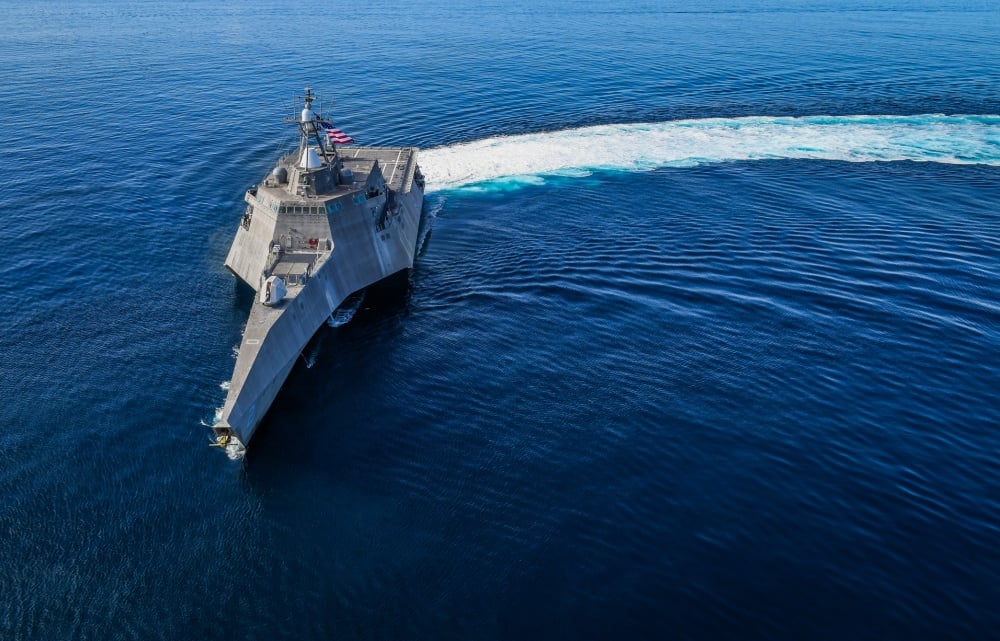
The Navy will decommission the service’s first two Littoral Combat Ships later this year, USNI News has learned.
USS Independence (LCS-2) will decommission on July 31, Navy spokeswoman Cmdr. Nicole Schwegman confirmed to USNI News. Meanwhile, USS Freedom (LCS-1) will leave the active fleet on Sept. 30, according to a decommissioning memo reviewed by USNI News.
Both ships will join the reserve fleet upon their decommissioning, a Navy official confirmed to USNI News.
The Navy last year proposed retiring the first four LCSs early in its Fiscal Year 2021 budget submission. Seeking to justify the service’s plans to decommission those ships, Chief of Naval Operations Adm. Mike Gilday has said it would cost about $2.5 billion to update the first four LCSs to the configurations of other ships in the class and that funding could be better spent elsewhere.
Freedom commissioned in 2008 and will have served 13 years when it leaves the fleet. Independence commissioned in 2010 and will have served 11 years. Both hulls were expected to have had a service life of at least 25 years.
When explaining plans to decommission the LCSs, service officials have noted that the first four ships in the class are test ships, a point rejected last year by one key lawmaker on the House Armed Services Committee.
Rep. Elaine Luria (D-Va.), a former Navy nuclear-qualified surface warfare officer who is now the vice-chair of the HASC, last year rebuked former acting Navy Secretary Thomas Modly for using that rationale.
In a recent interview with USNI News, Luria said she would not back Navy plans to decommission ships in the fleet to pay for new capabilities like hypersonic weapons.
“I’m not buying it because we need to look at what’s Battle Force 2025, we need to look at what we have today and how we can use it and how we can use it most efficiently. The idea of divesting of current platforms that still have usable service life in order to invest in something that we might develop the technology for in the future – paired with our poor track record on [developing new] platforms – just makes absolutely no sense to me,” Luria told USNI News.
“I agree with research and development into new technologies, I agree with a modest investment into developing capabilities for unmanned surface vessels; however, while that remains a technology that’s not mature, I do not agree with divesting of resources and assets that we have today that are desperately needed in order to deal with the issue we have with China, with Russia, and just around the world.”

While the LCS program has struggled to find its footing in the fleet, combatant commanders have recently sought to use the ships for region-specific missions. USNI News previously reported that U.S. 7th Fleet had been looking at the LCS to conduct both strike and Expeditionary Advanced Base Operations (EABO) missions.
Meanwhile, USS Freedom (LCS-1) recently deployed to U.S. Southern Command for anti-drug operations.
“There’ve been some real bright spots with Littoral Combat Ship deployments. You cite Freedom – it was a very successful deployment. They had a high operational availability,” U.S. Southern Command chief Adm. Craig Faller told Luria during a Congressional hearing last month.
“I would also cite the USS Gabby Giffords’ recent deployment, where the [commanding officer] on his own initiative, made a video for his crew and for his families that went public about their high operational success,” Faller added. “So that capability has proven and the CNO [Adm. Mike] Gilday’s commitment to getting the maintenance right is making a difference.”





